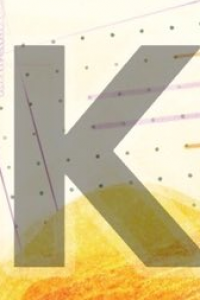Gary K. Wolfe reviews Elizabeth Hand
Fire, Elizabeth Hand (PM Press 978-1-62963-234-6, $13.00, 118pp, tp) January 2017.
 PM Press’s ongoing series of chapbook miscellanies of ‘‘outspoken authors’’ – basically appetizer-size collections of fiction, non-fiction, and interviews – can at their best convey a sense of meeting an old radical friend in a bar, sharing a few memories, and catching up on things. The authors featured so far are a stunning line-up – Le Guin, Bisson, Moorcock, Doctorow, Rucker, Piercy, Arnason, Nalo Hopkinson, Kim Stanley Robinson, Karen Joy Fowler, and more. Elizabeth Hand’s Fire, the series’ 18th volume, offers a cross-section of Hand’s work as both author and critic: a new title story, insightful appreciations of Thomas A. Disch and Alice Sheldon, a slightly updated autobiographical essay originally written for Foundation, an interview conducted by Terry Bisson, and two stories from her 2006 collection Saffron and Brimstone, which warrant revisiting not only because that book didn’t seem to earn the wide attention it deserved.
PM Press’s ongoing series of chapbook miscellanies of ‘‘outspoken authors’’ – basically appetizer-size collections of fiction, non-fiction, and interviews – can at their best convey a sense of meeting an old radical friend in a bar, sharing a few memories, and catching up on things. The authors featured so far are a stunning line-up – Le Guin, Bisson, Moorcock, Doctorow, Rucker, Piercy, Arnason, Nalo Hopkinson, Kim Stanley Robinson, Karen Joy Fowler, and more. Elizabeth Hand’s Fire, the series’ 18th volume, offers a cross-section of Hand’s work as both author and critic: a new title story, insightful appreciations of Thomas A. Disch and Alice Sheldon, a slightly updated autobiographical essay originally written for Foundation, an interview conducted by Terry Bisson, and two stories from her 2006 collection Saffron and Brimstone, which warrant revisiting not only because that book didn’t seem to earn the wide attention it deserved.
‘‘Fire’’, the one original story, sets the tone for the three fiction selections, and it’s a pretty apocalyptic tone at that. A disparate group of people – a reality TV performer, a poet, a documentary filmmaker, a firefighter, and an artist and illusionist – find themselves trapped for several days in a research station by one of those raging wildfires that have increasingly plagued the mountain states in recent years; only we quickly get hints of a broader scenario – terrorists using drones to start fires, an ominous reference to the ‘‘LA megafire last year,’’ lights in the sky that turn out to be entire flocks of birds on fire. The narrator is the TV performer nervously trying to put a breezy, stand-up spin on a desperate situation, so the elegant, measured language at which Hand is so masterful is hardly in evidence here, but the image of the burning birds is haunting, as is a series of charcoal drawings with which the artists has covered the walls of the station, ‘‘Like someday in ten thousand years, someone will find this bunker and see it and they’ll understand what happened.’’ That image links the story thematically to one of the reprints, ‘‘The Saffron Gatherers’’, which concerns a science fiction writer named Suzanne – once specializing in apocalypse, but lately turning to more benign time-travel tales – who is fascinated by the preserved ruins of Santorini following the massive ancient volcanic eruption. While she is visiting San Francisco, her lover, a wealthy journalist, presents her with a rare volume of murals from the site, including one called the Saffron Gatherers. Randall points out that, ironically, without the volcanic ash to preserve it, all this art would have been lost over the centuries. But as Suzanne leaves, she witnesses another massive disaster unfolding from the window of her plane, putting Santorini in ironic perspective. ‘‘Kronia’’, probably the most experimental but most beautifully written piece here, is a haunting, time-shifting romance involving the 2001 attack on the twin towers. In Saffron and Brimstone, this story and ‘‘The Saffron Gatherers’’ were presented as part of a set of variations called ‘‘The Lost Domain’’, along with two stories not here, ‘‘Echo’’ and ‘‘Calypso in Berlin’’, but they stand up well on their own.
The quirky interview with Bisson is less concerned with standard author-profile boilerplate than with such matters as where Hand chooses to live, how her hardboiled character Cass Neary dresses, bad movies about artists, and (one of Bisson’s favorite questions) her car. The two pieces on Disch and Sheldon – both authors who seemed to grapple with their cultural identities, Sheldon as herself and James Tiptree, Jr.; Disch as a poet, New Wave pioneer, and multigenre novelist – offer career overviews leavened by Hand’s particular insights into their preoccupations with death and suicide, quoting Sheldon telling Le Guin, ‘‘I am trying to become nothing.’’ It’s a chilling thought, but oddly in keeping with an idea barely below the surface of this whole collection – that artists eventually disappear into their art, which eventually is all we really know of them, whether in Santorini or in the ruins of a massive wildfire out west.







